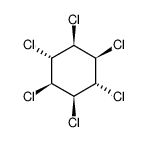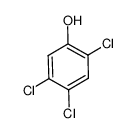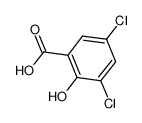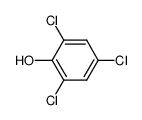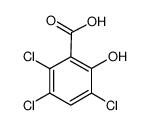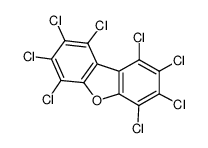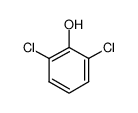| Product name | 2,3,4,6-Tetrachlorophenol |
|---|
| Product number | - |
|---|---|
| Other names | 2,3,4,6-TETRACHLOROPHENOL |
| Identified uses | For industry use only. |
|---|---|
| Uses advised against | no data available |
| Company | MOLBASE (Shanghai) Biotechnology Co., Ltd. |
|---|---|
| Address | Floor 4 & 5, Building 12, No. 1001 North Qinzhou Road, Xuhui District, Shanghai, China |
| Telephone | +86(21)64956998 |
| Fax | +86(21)54365166 |
| Emergency phone number | +86-400-6021-666 |
|---|---|
| Service hours | Monday to Friday, 9am-5pm (Standard time zone: UTC/GMT +8 hours). |
Acute toxicity - Oral, Category 3
Skin irritation, Category 2
Eye irritation, Category 2
Hazardous to the aquatic environment, short-term (Acute) - Category Acute 1
Hazardous to the aquatic environment, long-term (Chronic) - Category Chronic 1
2.2 GHS label elements, including precautionary statements| Pictogram(s) |   |
|---|---|
| Signal word | Danger |
| Hazard statement(s) | H301 Toxic if swallowed H315 Causes skin irritation H319 Causes serious eye irritation H410 Very toxic to aquatic life with long lasting effects |
| Precautionary statement(s) | |
| Prevention | P264 Wash ... thoroughly after handling. P270 Do not eat, drink or smoke when using this product. P280 Wear protective gloves/protective clothing/eye protection/face protection. P273 Avoid release to the environment. |
| Response | P301+P310 IF SWALLOWED: Immediately call a POISON CENTER/doctor/… P321 Specific treatment (see ... on this label). P330 Rinse mouth. P302+P352 IF ON SKIN: Wash with plenty of water/... P332+P313 If skin irritation occurs: Get medical advice/attention. P362+P364 Take off contaminated clothing and wash it before reuse. P305+P351+P338 IF IN EYES: Rinse cautiously with water for several minutes. Remove contact lenses, if present and easy to do. Continue rinsing. P337+P313 If eye irritation persists: Get medical advice/attention. P391 Collect spillage. |
| Storage | P405 Store locked up. |
| Disposal | P501 Dispose of contents/container to ... |
none
3.Composition/information on ingredients 3.1 Substances| Chemical name | Common names and synonyms | CAS number | EC number | Concentration |
|---|---|---|---|---|
| 2,3,4,6-Tetrachlorophenol | 2,3,4,6-Tetrachlorophenol | 58-90-2 | none | 100% |
Consult a physician. Show this safety data sheet to the doctor in attendance.
If inhaledFresh air, rest. Refer for medical attention.
In case of skin contactRemove contaminated clothes. Rinse and then wash skin with water and soap. Refer for medical attention .
In case of eye contactFirst rinse with plenty of water for several minutes (remove contact lenses if easily possible), then refer for medical attention.
If swallowedGive a slurry of activated charcoal in water to drink. Refer for medical attention .
4.2 Most important symptoms/effects, acute and delayedSYMPTOMS: Symptoms of exposure to this compound may include irritation of the skin, eyes, nose, and pharynx; conjunctivitis, corneal injuries, and dermatitis with repeated skin contact. Symptoms of exposure to phenols (through ingestion or contact with the skin or mucous membranes) may include painless blanching or erythema, possible corrosion, profuse sweating, intense thirst, nausea and vomiting, diarrhea, cyanosis from methemoglobinemia, hyperactivity; stupor; blood pressure fall; hyperpnea; abdominal pain; hemolysis; convulsions; coma; and pulmonary edema followed by pneumonia. If death from respiratory failure is not immediate, jaundice and oliguria or anuria may occur. Skin sensitivity occasionally occurs. ACUTE/CHRONIC HAZARDS: This compound is toxic by ingestion and inhalation. It is an irritant of the skin, eyes, nose and pharynx. When heated to decomposition it emits toxic fumes of chloride ion. It is an experimental carcinogen.
4.3 Indication of immediate medical attention and special treatment needed, if necessary Absorption, Distribution and ExcretionThe compounds are readily absorbed from the gastroenteric tract and from parenteral sites of injection. /Chlorophenols/
5.Fire-fighting measures 5.1 Extinguishing media Suitable extinguishing mediaFires involving this material can be controlled with a dry chemical, carbon dioxide or Halon extinguisher.
5.2 Specific hazards arising from the chemicalLiterature sources indicate that this compound is nonflammable.
5.3 Special protective actions for fire-fightersWear self-contained breathing apparatus for firefighting if necessary.
6.Accidental release measures 6.1 Personal precautions, protective equipment and emergency proceduresUse personal protective equipment. Avoid dust formation. Avoid breathing vapours, mist or gas. Ensure adequate ventilation. Evacuate personnel to safe areas. Avoid breathing dust. For personal protection see section 8.
6.2 Environmental precautionsPersonal protection: chemical protection suit and particulate filter respirator adapted to the airborne concentration of the substance. Do NOT let this chemical enter the environment. Sweep spilled substance into covered containers.
6.3 Methods and materials for containment and cleaning upPick up and arrange disposal. Sweep up and shovel. Keep in suitable, closed containers for disposal.
7.Handling and storage 7.1 Precautions for safe handlingAvoid contact with skin and eyes. Avoid formation of dust and aerosols. Avoid exposure - obtain special instructions before use.Provide appropriate exhaust ventilation at places where dust is formed. For precautions see section 2.2.
7.2 Conditions for safe storage, including any incompatibilitiesProvision to contain effluent from fire extinguishing. Separated from food and feedstuffs. Store in an area without drain or sewer access.MATERIALS WHICH ARE TOXIC AS STORED OR WHICH CAN DECOMPOSE INTO TOXIC COMPONENTS ... SHOULD BE STORED IN A COOL WELL VENTILATED PLACE, OUT THE DIRECT RAYS OF THE SUN, AWAY FROM AREAS OF HIGH FIRE HAZARD, AND SHOULD BE PERIODICALLY INSPECTED ... INCOMPATIBLE MATERIALS SHOULD BE ISOLATED ...
8.Exposure controls/personal protection 8.1 Control parameters Occupational Exposure limit valuesno data available
Biological limit valuesno data available
8.2 Appropriate engineering controlsHandle in accordance with good industrial hygiene and safety practice. Wash hands before breaks and at the end of workday.
8.3 Individual protection measures, such as personal protective equipment (PPE) Eye/face protectionSafety glasses with side-shields conforming to EN166. Use equipment for eye protection tested and approved under appropriate government standards such as NIOSH (US) or EN 166(EU).
Skin protectionWear impervious clothing. The type of protective equipment must be selected according to the concentration and amount of the dangerous substance at the specific workplace. Handle with gloves. Gloves must be inspected prior to use. Use proper glove removal technique(without touching glove's outer surface) to avoid skin contact with this product. Dispose of contaminated gloves after use in accordance with applicable laws and good laboratory practices. Wash and dry hands. The selected protective gloves have to satisfy the specifications of EU Directive 89/686/EEC and the standard EN 374 derived from it.
Respiratory protectionWear dust mask when handling large quantities.
Thermal hazardsno data available
9.Physical and chemical properties| Physical state | beige solid |
|---|---|
| Colour | NEEDLES FROM LIGROIN, ACETIC ACID |
| Odour | STRONG ODOR |
| Melting point/ freezing point | 63-66ºC |
| Boiling point or initial boiling point and boiling range | 164ºC 23mm |
| Flammability | Combustible. Gives off irritating or toxic fumes (or gases) in a fire. |
| Lower and upper explosion limit / flammability limit | no data available |
| Flash point | 11ºC |
| Auto-ignition temperature | no data available |
| Decomposition temperature | no data available |
| pH | no data available |
| Kinematic viscosity | no data available |
| Solubility | less than 1 mg/mL at 20°C |
| Partition coefficient n-octanol/water (log value) | log Kow= 4.45 |
| Vapour pressure | 1 mm Hg at 100°C ; 60 mm Hg at 190°C; 400 mm Hg at 250°C |
| Density and/or relative density | 1.839 g/cm3 |
| Relative vapour density | no data available |
| Particle characteristics | no data available |
no data available
10.2 Chemical stabilityStable under recommended storage conditions.
10.3 Possibility of hazardous reactions2,3,4,6-TETRACHLOROPHENOL reacts as a weak organic acid and is incompatible with strong reducing substances such as hydrides, nitrides, alkali metals, and sulfides. Flammable gas (H2) is often generated, and the heat of the reaction may ignite the gas. May generate heat with bases. Such heating may initiate polymerization.
10.4 Conditions to avoidno data available
10.5 Incompatible materialsno data available
10.6 Hazardous decomposition products... WHEN HEATED TO DECOMP, IT EMITS HIGHLY TOXIC FUMES OF /HYDROGEN CHLORIDE/.
11.Toxicological information Acute toxicity- Oral: LD50 Mouse (C57, female) oral 150 mg/kg (solvent: propylene glycol)
- Inhalation: no data available
- Dermal: no data available
no data available
Serious eye damage/irritationno data available
Respiratory or skin sensitizationno data available
Germ cell mutagenicityno data available
CarcinogenicityEvaluation: There is limited evidence in humans for the carcinogenicity of combined exposures to polychlorophenols or to their sodium salts. ... Overall evaluation: Combined exposures to polychlorophenols or to their sodium salts are possibly carcinogenic to humans (Group 2B). /Polychlorophenols/
Reproductive toxicityno data available
STOT-single exposureno data available
STOT-repeated exposureno data available
Aspiration hazardno data available
12.Ecological information 12.1 Toxicity- Toxicity to fish: no data available
- Toxicity to daphnia and other aquatic invertebrates: no data available
- Toxicity to algae: no data available
- Toxicity to microorganisms: no data available
2,3,4,6-Tetrachlorophenol persisted for >72 days in a laboratory test with a soil inoculum; halophenols which had substituents meta to the phenol group were resistant to biodegradation(1). Another study reported that 2,3,4,6-tetrachlorophenol disappeared from soil to a large degree in 4 weeks(6). Fungi that attack conifer heartwood(2) as well as those found in litter shavings in chicken houses(3) have been reported to degrade 2,3,4,6-tetrachlorophenol. A bacterium acclimated to pentachlorophenol was able to also utilize 2,3,4,6-tetrachlorophenol as a growth substrate(4). The removal of 2,3,4,6-tetrachlorophenol in kraft pulp mill/bleach plant effluent was far superior in an anaerobic reactor (83% with a 12 hr retention time) than in an aerated lagoon (33%, retention time 14 days) or an activated sludge plant (25%)(5). 2,3,4,6-Tetrachlorophenol, concn 100 mg/l, reached 7% of its theoretical BOD over 4 weeks using an activated sludge inoculum(7). High-rate operation (5h; 350 to 480 mg chlorophenol/l/d) of an aerobic fluidized-bed reactor resulted in a 99.6% mean removal of 2,3,4,6-tetrachlorophenol over a period of 235 days(8). 100% removal of 2,3,4,6-tetrachlorophenol was observed in aerobic enrichment cultures following 8 days incubation(8). Over a 407-day study period, 2,3,4,6-tetrachlorophenol was detected in the effluent of a sewage treatment plant in Karkola, Finland employing activated sludge at a mean concn of 6.4 ug/l; mean concns of 13,000 and 1.4 ug/l were detected in the fed groundwater and dewatered sludge, respectively(9).
12.3 Bioaccumulative potentialIn static bioconcentration tests, the log BCF for 2,3,4,6-tetrachlorophenol in guppies was 2.30 after 24 hr(1) while for goldfish it was 1.95 after 12 hr(2). These correspond to BCFs of 200 and 89, respectively(SRC). BCFs of 25 to 62 and 36 to 95 were measured in carp for 2,3,4,6-tetrachlorophenol at 10 and 1 ug/l, respectively(3). BCFs measured in the soft tissue of freshwater mussel, Anodonta anatina, ranged from 49 to 156; depuration half-lives in the soft tissue were generally less than 24 hours(4). According to a classification scheme(5), these BCFs suggest that bioconcentration in aquatic organisms is low to high(SRC). The mean concn of free 2,3,4,6-tetrachlorophenol in the bile of rainbow trout exposed to a 2% v/v solution of biologically treated kraft mill pulp effluent for 30 days was 0.15 ug/ml; glucuronide acid conjugated 2,3,4,6-tetrachlorophenol was 19.4 ug/ml(6). The mean concn of free 2,3,4,6-tetrachlorophenol in the bile (plasma) of rainbow trout exposed to a 7:10:4 (w/v) mixture of 2,4,6-trichlorophenol, 2,3,4,6-tetrachlorophenol and pentachlorophenol for 6 days was 14.8 (9.7) ug/ml; 1795 (16.3) ug/ml was in the conjugated form(6).
12.4 Mobility in soilKoc values for 2,3,4,6-tetrachlorophenol in river sediment, lake sediment and aquifer material ranged from 6040 to 7690; average value of 6640(1). The Koc of 2,3,4,6-tetrachlorophenol is estimated as approximately 6300(SRC), using a log Kow of 4.45(2) and a regression-derived equation(3,SRC). According to a classification scheme(4), these Koc values suggest that 2,3,4,6-tetrachlorophenol is expected to be immobile in soil(SRC). In natural waters of low ionic strength and pH below approximately 6.4, the adsorption is dominated by the partitioning of the undissociated phenol between the aqueous phase and the organic phase contained in the sediment. However, at higher pH's, the contribution of the phenolate ion cannot be neglected(1). There is strong evidence that the adsorption of the phenolate species is also predominately a partitioning between the aqueous phase and organic matter in the sorbent and is dependent on the ionic strength of the aqueous phase(1). An equilibrium partition coefficient (Kp) of 1.8 was determined in batch equilibrium experiments using soil and groundwater (pH 10) from Alkali Lake, OR(7). In a laboratory experiment, 40% of 2,3,4,6-tetrachlorophenol sorbed to Weser estuary (Germany) sediment after 21 hr incubation at 14.5°C; 65% was desorbed from the loaded sediment after another 21 hr(5). In contrast the partition ratios of 2,3,4,6- and/or 2,3,5,6-tetrachlorophenol between sediment/water and suspended matter/water from the Weser estuary were 38 and 6.3, respectively(5). In the Rhine River (The Netherlands) the median sediment to water ratio of tetrachlorophenol was 24(6). Log Kom values ranging from 1.275 to 2.750 were measured for 2,3,4,6-tetrachlorophenol in 14 different soil and sediment samples; mean log Kom for anionic 2,3,4,6-tetrachlorophenol was 2.431(8). Freundlich sorption coefficients of 2.173, 6.373, 2.203, and 6.392 were measured in quartz (pH 7.5), calcite (pH 7.2), kaolinite (pH 7.0), and montmorillonite (pH 5.3), respectively(9). Sorption of 2,3,4,6-tetrachlorophenol was negligible to two surface soils containing 2.8 and 2.1% organic matter, and in samples of deeper sediment layers, consisting of 92 to 98% clay and silt and 0.5 to 8.4% organic matter; a Kd value of 16.7 was measured in a surface soil sample containing 12.2% organic matter(10). Kf values of 95 and 85 were determined in Holten soil (6.1% organic matter and 2.4% clay) and Kooyenburg soil (3.7% organic matter and 1.4% clay), respectively)(11).
12.5 Other adverse effectsno data available
13.Disposal considerations 13.1 Disposal methods ProductThe material can be disposed of by removal to a licensed chemical destruction plant or by controlled incineration with flue gas scrubbing. Do not contaminate water, foodstuffs, feed or seed by storage or disposal. Do not discharge to sewer systems.
Contaminated packagingContainers can be triply rinsed (or equivalent) and offered for recycling or reconditioning. Alternatively, the packaging can be punctured to make it unusable for other purposes and then be disposed of in a sanitary landfill. Controlled incineration with flue gas scrubbing is possible for combustible packaging materials.
14.Transport information 14.1 UN Number| ADR/RID: UN2020 | IMDG: UN2020 | IATA: UN2020 |
| ADR/RID: CHLOROPHENOLS, SOLID |
| IMDG: CHLOROPHENOLS, SOLID |
| IATA: CHLOROPHENOLS, SOLID |
| ADR/RID: 6.1(b) | IMDG: 6.1(b) | IATA: 6.1(b) |
| ADR/RID: III | IMDG: III | IATA: III |
| ADR/RID: yes | IMDG: yes | IATA: yes |
no data available
14.7 Transport in bulk according to Annex II of MARPOL 73/78 and the IBC Codeno data available
15.Regulatory information 15.1 Safety, health and environmental regulations specific for the product in question| Chemical name | Common names and synonyms | CAS number | EC number |
|---|---|---|---|
| 2,3,4,6-Tetrachlorophenol | 2,3,4,6-Tetrachlorophenol | 58-90-2 | none |
| European Inventory of Existing Commercial Chemical Substances (EINECS) | Listed. | ||
| EC Inventory | Listed. | ||
| United States Toxic Substances Control Act (TSCA) Inventory | Listed. | ||
| China Catalog of Hazardous chemicals 2015 | Listed. | ||
| New Zealand Inventory of Chemicals (NZIoC) | Not Listed. | ||
| Philippines Inventory of Chemicals and Chemical Substances (PICCS) | Not Listed. | ||
| Vietnam National Chemical Inventory | Not Listed. | ||
| Chinese Chemical Inventory of Existing Chemical Substances (China IECSC) | Listed. | ||
| Creation Date | Aug 18, 2017 |
|---|---|
| Revision Date | Aug 18, 2017 |
- CAS: Chemical Abstracts Service
- ADR: European Agreement concerning the International Carriage of Dangerous Goods by Road
- RID: Regulation concerning the International Carriage of Dangerous Goods by Rail
- IMDG: International Maritime Dangerous Goods
- IATA: International Air Transportation Association
- TWA: Time Weighted Average
- STEL: Short term exposure limit
- LC50: Lethal Concentration 50%
- LD50: Lethal Dose 50%
- EC50: Effective Concentration 50%
- IPCS - The International Chemical Safety Cards (ICSC), website: http://www.ilo.org/dyn/icsc/showcard.home
- HSDB - Hazardous Substances Data Bank, website: https://toxnet.nlm.nih.gov/newtoxnet/hsdb.htm
- IARC - International Agency for Research on Cancer, website: http://www.iarc.fr/
- eChemPortal - The Global Portal to Information on Chemical Substances by OECD, website: http://www.echemportal.org/echemportal/index?pageID=0&request_locale=en
- CAMEO Chemicals, website: http://cameochemicals.noaa.gov/search/simple
- ChemIDplus, website: http://chem.sis.nlm.nih.gov/chemidplus/chemidlite.jsp
- ERG - Emergency Response Guidebook by U.S. Department of Transportation, website: http://www.phmsa.dot.gov/hazmat/library/erg
- Germany GESTIS-database on hazard substance, website: http://www.dguv.de/ifa/gestis/gestis-stoffdatenbank/index-2.jsp
- ECHA - European Chemicals Agency, website: https://echa.europa.eu/






